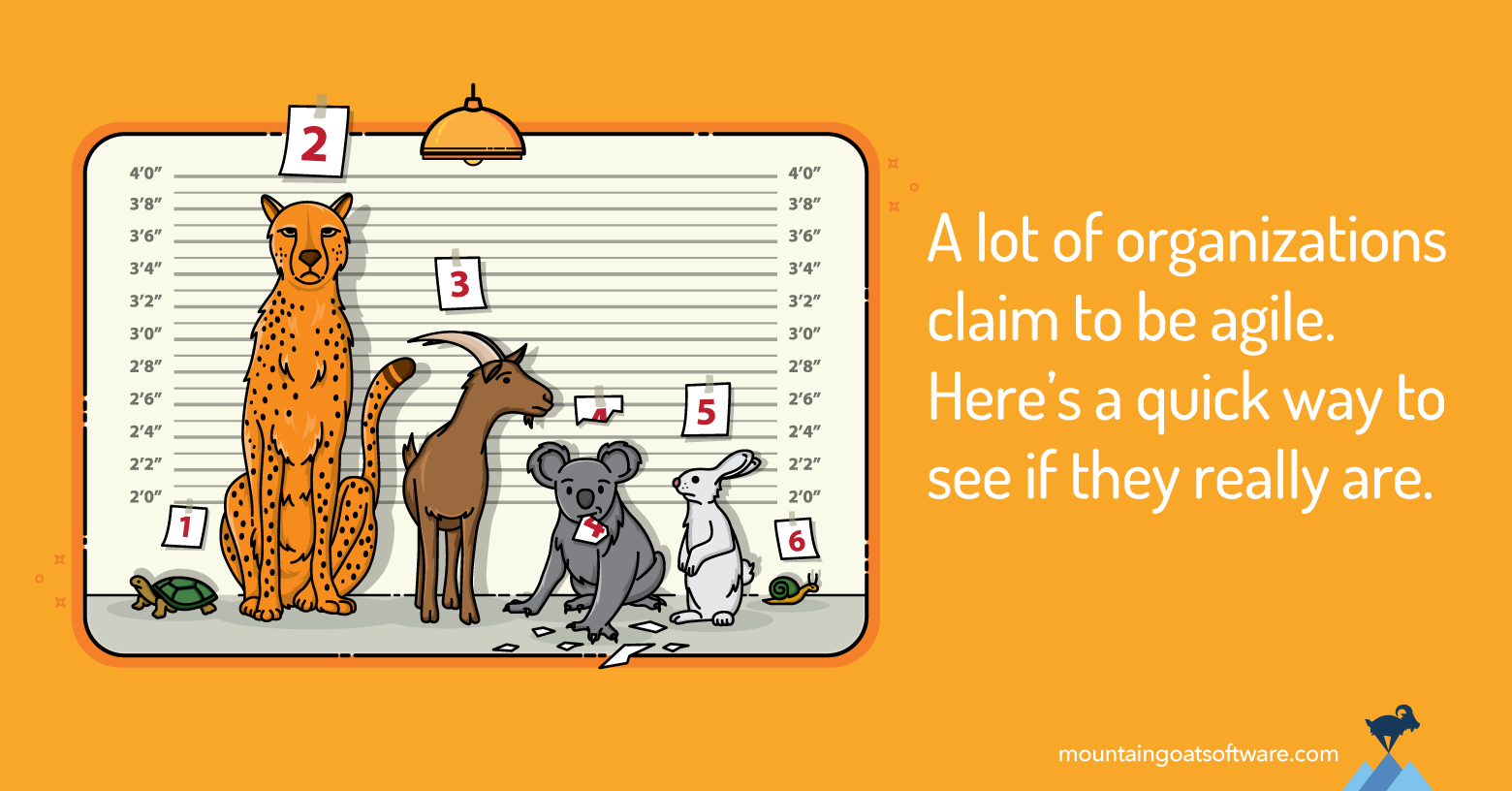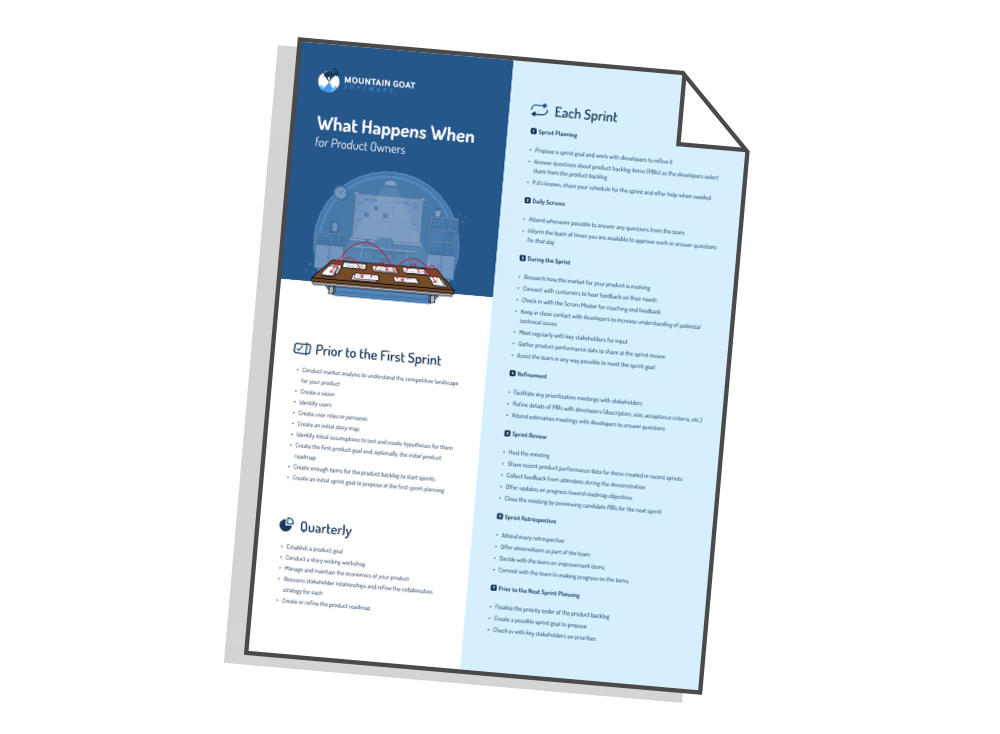Assessing whether an organization is agile is difficult. An organization could be agile in some ways yet very rigid in others. And even if an organization is great at some aspect of agile, it may struggle with others.
So there’s no simple, perfect answer to whether an organization is agile or not. Agile exists on a continuum. Some organizations are very agile, others not so much but may be trying to improve.
Yet, having a quick way of assessing whether an organization is at least moderately agile and trying to get better would be helpful. For example, a job candidate may want to know if an organization is agile before committing to join that organization.
To help in that and similar situations, I wanted identify a very small set of questions that would reveal how agile an organization (a company or team) truly is.
I decided to limit myself to three questions. The choice of three was arbitrary. But I deliberately wanted a sufficiently small number that someone interviewing for a position, for example, would be able to ask them during an interview.
Assess Agile Team Functionality
Question 1: How frequently do your teams fully integrate their products?
With this first question, I want to understand whether teams are cross-functional and structured in a manner that allows them to get all the way to done frequently. I first thought about asking how frequently products are actually released to customers. But the answer to that is actually less informative because it depends tremendously on how frequently customers even want a new release. For example, I love when any SaaS product I use adds new features. (Assuming they’re features I want and not just bloat.) Amazon--the recipient, I believe, of most of my discretionary spending--can update its site many times a day, and I’m happy. The same is not true, however, for example for a mobile phone manufacturer. If I buy a new iPhone, I’m going to be frustrated if Apple releases two new phones during my drive home from the Apple store. So the frequency with which a product is actually released may not tell me much about the organization’s agility. I’m much more interested in the frequency with which they fully integrate. That tells me how often the organization could release if customers were to want them to.
Gauge Leadership Commitment to Agile
Question 2: How do you respond if there's a crisis or problem that makes a deadline or planned milestone no longer possible to achieve?
One of the best indicators of how strongly the organization believes in agile is how it responds when there’s a crisis.
If for some reason a team cannot meet a previously agreed upon milestone, is the organization’s response to say, “We don’t have time for this agile stuff; we have a deadline to meet?” Or do employees realize that a crisis is the time to even more fully embrace agile?
Asking how the organization responds to such a crisis reveals if agile is a deeply held belief or just something leadership wants to try.
Uncover Hidden Agile Dysfunctions
Question 3: Tell me about your best Scrum Master or product owner.
Asking to hear about who someone thinks is the best Scrum Master or product owner reveals a lot about how people in that company think about agile.
When asking about a great Scrum Master, I’m looking for red flags. For example, are Scrum Masters in the organization spread across too many teams? There’s room for debate about whether the Scrum Master role needs to be full-time, but one manager told me their best Scrum Master was working with 20 teams.
Another red flag would be hearing about an overly directive or prescriptive Scrum Master. Or that although claiming to use Scrum, the organization decided to let project managers retain that title rather than “just renaming them all to Scrum Masters.”
As with answers about a great Scrum Master, there are red flags to listen for when someone is describing a great product owner.
Once when I asked to know more about a great product owner in the organization, I was told about someone who was able to take on the product owner role “without it affecting her real work.” That’s a red flag for sure.
Similarly, I’m hoping to hear about a product owner who is engaged with teams throughout their iterations rather than just at planning and review meetings. If I don’t that is another of the many possible red flags.
Three Questions Aren’t Enough, But They’re a Start
It’s probably impossible to know how agile an organization is from only three questions. With time for a more thorough interview, you could establish a more complete and nuanced view of an organization’s agility.
But I think these three provide at least a solid foundation for an opinion. You could use them to help decide if taking a job in that organization would meet your expectations of what agile is. I’ve used them before first engagements with clients so I know what to expect when I arrive.
What Questions Do You Ask?
What do you think of my three questions? How would your organization answer them? If you could only ask three questions of someone to assess the organization’s agility, what would you ask?
Last update: July 11th, 2024









